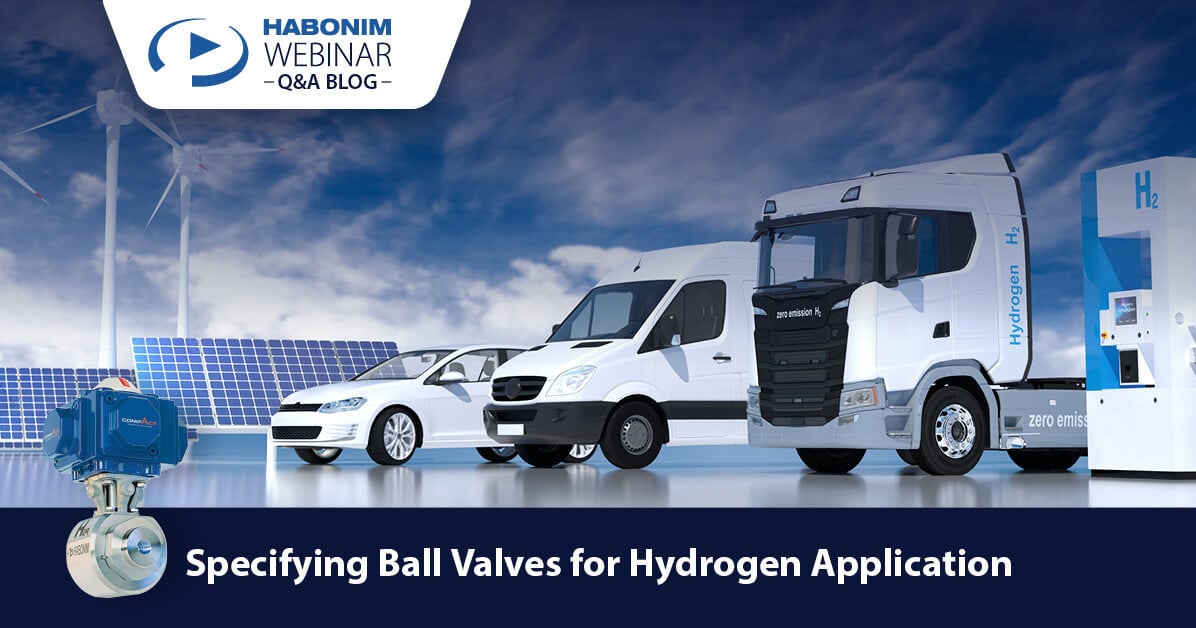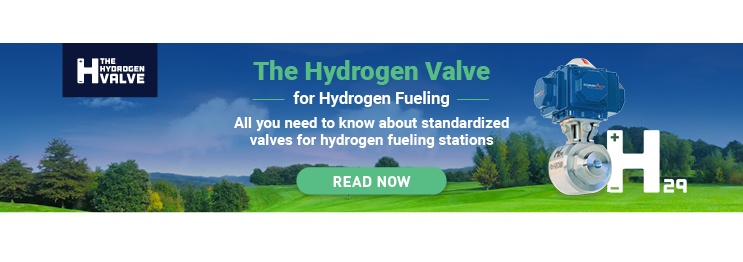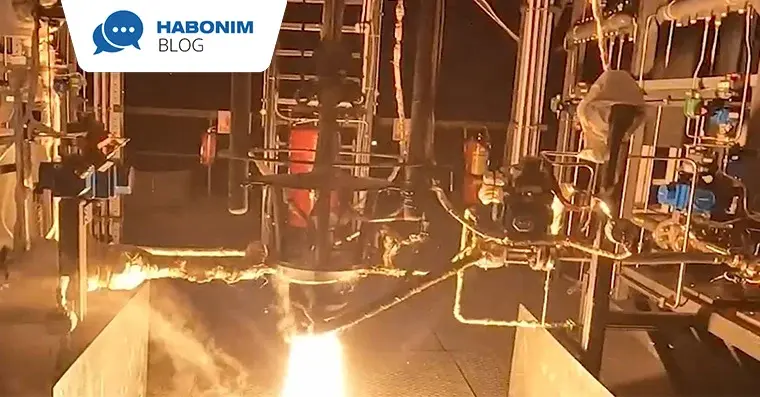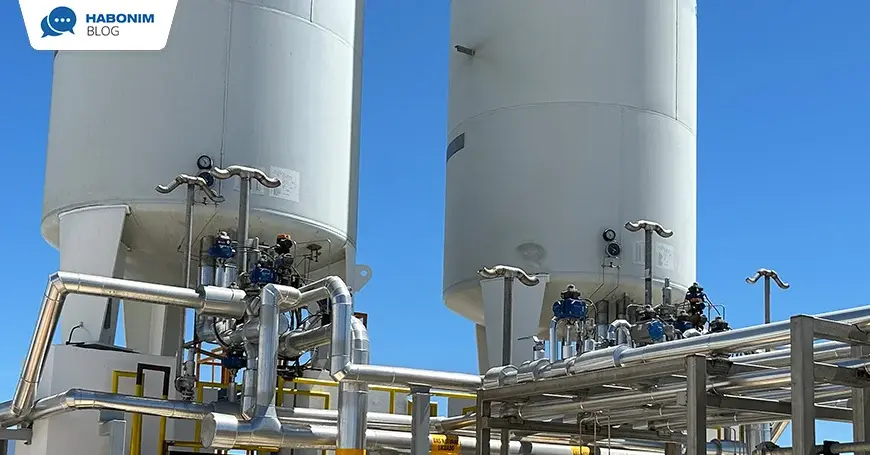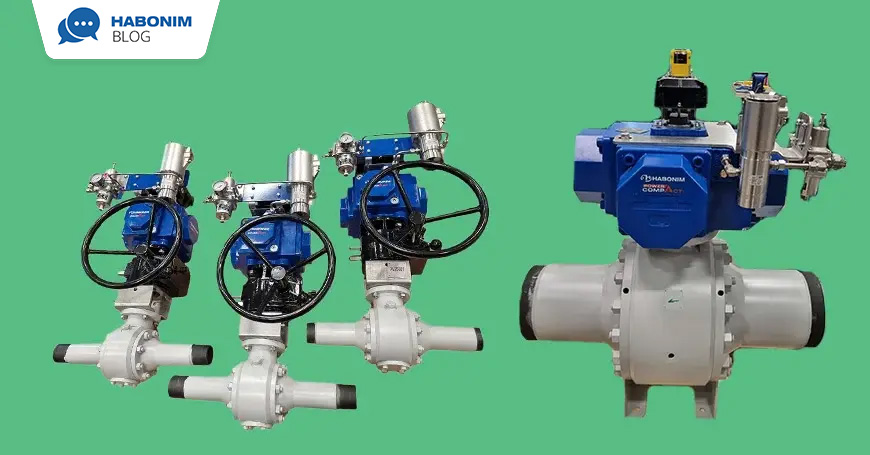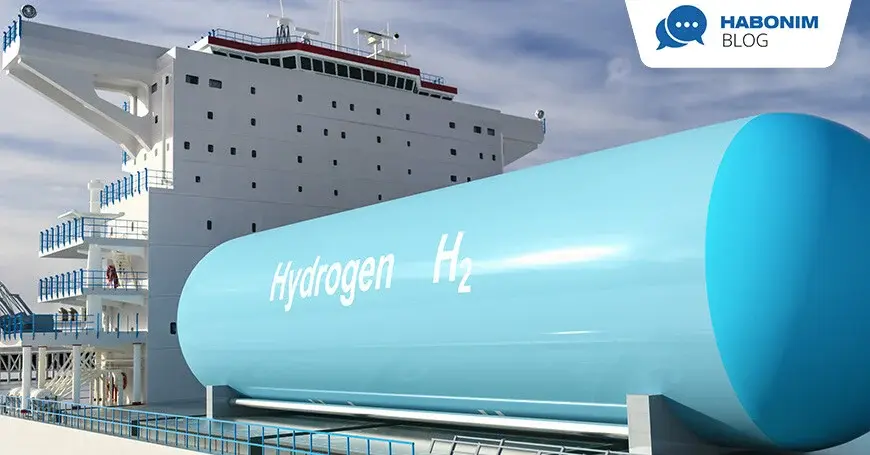Our recent webinars focusing on hydrogen valves attracted a great deal of interest and our participants had a great deal of questions. Some of the key questions and our experts' answers from the "Specifying Ball Valves for Hydrogen Applications" are featured in this QA.
Q: Do you have valves for up to 1000 barg?
A: The H29 valve shown can be used up to 1000 barg. If you need it for trucks or transportation, then you need TPED type approval, available with our H29 series up to 700 barg (10,000psi) or with our H99 series up to 1000 barg (15,000psi), both are also tested according to ISO19880 for H2 fulling stations.
Q: What is the maximum size/rating of trunnion ball valves you can supply?
A: For PN1000 (1,034barg, 15,000psi) we offer the H99 series up to 1". For bigger sizes, Class 2500 / 414 barg / 6,000psi, we offer our 95 & 96 series up to 12”. We also make special class custom-made valves on request. All can be used for H2 applications
Q: Do you supply valves for pipeline applications? / What valves do you have for pipelines?
A: Our scope for H2 valves is up to 16”-18" (DN400-DN450). We provide valves for H2 injection systems and for 100% H2 pipelines up to 12" (DN300) on a regular basis.
Q: If connection requirements are flanged, which range do you have for flanged valves for H2?
A: Habonim can provide full range of flanged DIN and ANSI flanged connections according to valve pressure ratings up to PN400 and ANSI 2500. We are manufacturing flanged valves with an H2 design up to Class 2500/ 414 barg / 6,000psi. However, flanges are not usually recommended in H2 applications because they are potential leakage points.
Q: What is the difference between H29 and H99 – can both be used up to 1000 barg?
A: H99 has a TPED approval and is tested to ISO19880 for 1034 barg / 15,000psi; H29 is rated for maximal working pressure of 1034 barg / 15,000psi, but only certified to TPED up to 700 barg / 10,000psi.
Design of the two valves is different: H99 is trunnion ball-based; H29 is floating ball-based. This allows the valves to withstand the tests that are performed at 2.5 times of the maximal pressure rating of the valve — which means operating it at 2500 barg / 36,000psi in order to obtain certification for 1,000 barg / 15,000psi.
Q: Can H29 be welded?
A: Not recommended. As it is a three-piece threaded body style valve, the end connections are threaded into the body. Therefore, once welded, the valve cannot be disassembled without cutting it away from the tube or pipe. We have three-piece bolted style valves with same internal design and H2 special extra packing and with configuration for welding to pipe or tube: series H28 (Class 3500 / 570barg / 8,000psi) and series H47 (Class 900 / 150barg / 2,200psi).
Q: Are all the valves fire safe, or are there some specific fire safe valves?
A: All Habonim H2 valves are designed and fire-safe certified.
In general all Habonim valve offer is fire-safe certified as standard However, a small change in the body seal arrangement will transform it into a non-graphite all-polymeric sealed valve that will be non-fire-safe.
Q: Is the double stem seal imposed by a specific standard or by good engineering practice?
A: Good engineering practice. ISO15848-1 is about tightness, but at level 10-^4/BH for ball valves and, as a consequence, puts the focus on lifetime and number of cycles more than on very strict leakage level. For enhanced performance and tightness level and for fast/high-cycling operation (as in fueling) a backup second seal is added to extend the long-term sealing integrity, especially at very high pressures. There are no standards requirements on stem design for high pressure H2, but ISO19880 and TPED tests are extremely demanding and impose good engineering practices beyond ISO15848-1. Habonim is perfecting it's sealing arrangements for H2 and He, for high cycle and for high pressure use for more then a decade and bringing ball valves to sealing unparalleled levels. This is one of the reasons Habonim valves pioneered ISO19880-3 type approval.
Q: Is O2 cleaning not needed if H2 is not used for fuel cells?
A: To the best of our knowledge, O2 clean valves are required for H2 according to ISO 14687-2 (Proton exchange membrane (PEM) fuel cell applications) — so for all fueling applications. But if you deliver H2 to a shared pipeline, as end users may be also using fuel cells, you will be probably asked for the same quality as well. So basically, O2 clean valves are required except when H2 is for burning or some specific industrial chemical usage. It is up to the end user to align to its process needs.
Q: What type of grease do you use for the stem?
A: The stem is not greased for H2 valves, since they are O2 clean. Gas media is the "grease" for H2 valves.
Q: Can Viton materials be used with Hydrogen gas?
A: We recommend referring to the materials compliance book available online; Viton® and HNBR are rated A which is safe to use with hydrogen.
Q: Could you provide a list of soft materials that can be used with hydrogen gas, as well as which soft materials cannot be used?
A: You need a high wearing material. By default, we use Virgin Peek for seats, high density NBR for sealing, and a special material for the HermetiX packing, but that’s not the only materials available with us; depending on temperature and other process requirements.
As some of our knowledge regarding materials is part of our IP, you can consult us for specific needs and in-depth information on all materials utilized will be provided to H2 valve users.
<< Consult our experts about your application >>
Q: What is unique about coned and threaded end-connections?
A: Conned and Threaded connections (C&T) are sometimes referred as “autoclave” style connections, which are very common for very and ultra high pressure tube systems. Refer to the diagram below where you can see the tube itself (yellow) is coned at its end to form a metal-to-metal seal with the valve body (green) and it is threaded in order to hold a threaded collar (brown) that pushes the tube against the valve body by the nut (gray).
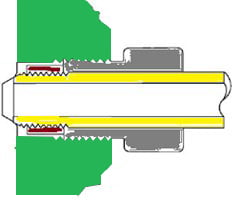
Q: What threaded end connections are available apart from cone and threaded?
A: With either the H29 & H99 series, we offer tapered and parallel threading (NPT or BSPP); these should be used with the limitation of pressure rating these are designed for and the piping allowance and size. For other applications, please consult us.
Q: I notice you tested with helium and not hydrogen? Shouldn’t a certification house test with H2?
A: He is a smaller molecule then H2 and the test in terms of leakage is more relevant if performed on He than it would be on H2. As our labs are equipped with He testing equipment, this is our standard test gas.
Q: Are Habonim considering developing valves for liquid hydrogen for marine use? If yes, what’s the time schedule?
A: Habonim has valves for LH2 and marine certification. Contact us for more details.
Q: Why should you not use the same ball valve for H2 and O2?
A: O2 use has unique requirements specially with high pressure use that are different of those of H2; the materials compatibility for these two gases are different and standards & regulations are separate, or specific to only one of these. It is up to the system designer and end user to define the type of valve to use.
Q: Do you have any reference for PSA applications in any of the hydrogen plant in refineries?
A: Habonim valves are used in many processes and are sold via many distribution channels. Therefore, we are not always aware of all the applications our valves are used for; this is true also for Pressure Swing Adsorption (PSA).
Q: My application is more driven by temperature than pressure - what are the valve temperature limits, and what drives this limit (I'm guessing that it's the seals)?
A: We make H2 valves up to 650ºC with ISO15848-1 fugitive emission sealing with a system based on media container unit / stem extension with thermal exchange to cool down gas up to the stem. On the other end, we have valves for cryogenic use also for H2.
Q: Do we need to consider HP H2 service specifically while sizing actuators.
A: H29 and H99 series are offered as manual or automated valve with a pre-designed (sized) actuation package to support up to full differential pressure. The valve technical information is available in our catalog.
Q: Are all seal materials are qualified to Norsok M-710 or ISO 23936?
A: Our raw materials suppliers & manufacturers are qualified.
Q: What’s the difference between EN12266-1 and ISO15848-1?
A: EN12266-1 refers to in-line test and uses N2 of air as media. Ball valves shall be Rate A (zero leakage). This can be also tested with He and search for zero leakage on visual bubble counting. More accurate measuring can be done with an He sniffing system/chamber; then the level shall be < 10-6 mbar/l/s (some applications such as electronics or clean rooms may require even 10-7 mbar/l/s).
ISO15848-1 refers to leakage to the atmosphere and is a type approval of a valve submitted to intense on-off and temperature cycling. It measures the number of cycles the valve can achieve before leaking beyond the acceptable threshold of leakage measured with He, which for ball valves and BH class is 10-4 mg/s/meter of the stem perimeter. The valve is certified to a seal level 1-to-5; our valves are certified as level 5 – the maximum level possible, and withstand more than 500,000 cycles.

